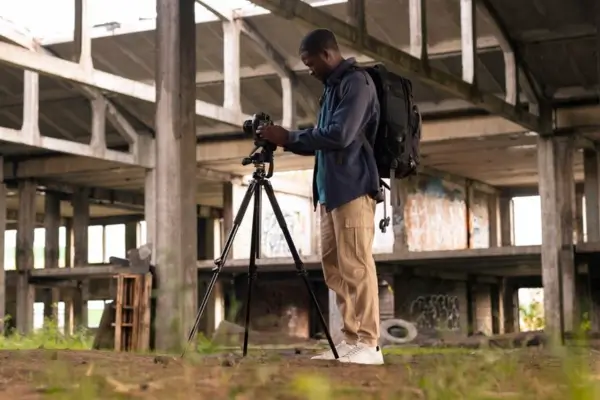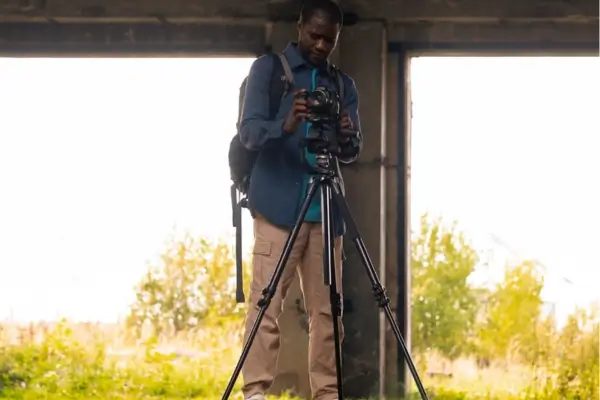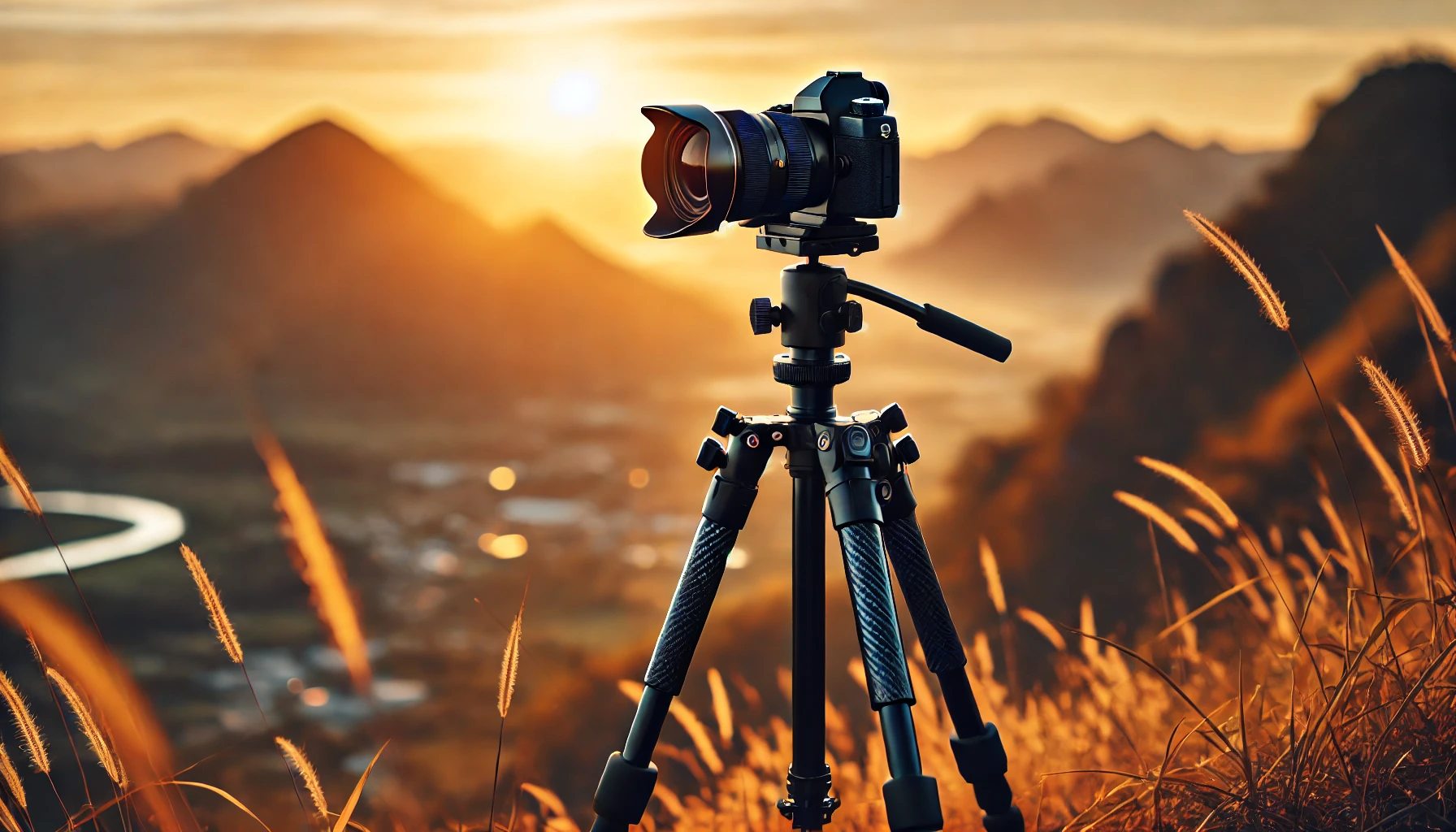A tripod is one of the most essential tools for photographers looking to enhance their image quality. Whether you’re capturing long-exposure landscapes, detailed macro shots, or professional studio portraits, stability and precision play a crucial role in achieving sharp, well-composed images.
Without a tripod, even the slightest hand movement can cause unwanted blur, especially in low-light conditions or when using slower shutter speeds. Additionally, a sturdy and precise tripod allows for better framing and composition, giving photographers the freedom to focus on creativity without worrying about camera shake.
In this article, we will explore the best tripods that offer exceptional stability and precision. Whether you’re a beginner or a professional, this guide will help you find the perfect tripod to elevate your photography to the next level.
Why Stability and Precision Matter in Photography
When it comes to capturing stunning photographs, stability and precision play a crucial role in ensuring sharpness, clarity, and professional-quality results. Whether you’re shooting landscapes, macro photography, or long exposures, using a stable tripod can make a significant difference in the outcome of your images.
The Role of Stability in Avoiding Camera Shake
Camera shake is one of the biggest culprits behind blurry photos, especially in low-light conditions or when using slow shutter speeds. Even the slightest movement—whether from pressing the shutter button, wind, or an unstable surface—can result in an image that lacks sharpness. A high-quality tripod provides a solid foundation, eliminating unwanted motion and allowing you to take crisp, detailed shots with confidence.
Precision for Long Exposures, Macro, and Landscape Photography
Some photography styles require absolute precision, where even a minor shift in position can impact the final composition. Here’s why stability and precision matter in different scenarios:
- Long Exposure Photography: When capturing light trails, waterfalls, or night sky images, a stable tripod is essential to keep the camera perfectly still during extended shutter speeds. Without it, motion blur can ruin the effect.
- Macro Photography: Shooting close-up subjects, like flowers or insects, requires meticulous focus and minimal movement. A tripod allows for fine adjustments, ensuring that every tiny detail is sharp.
- Landscape Photography: Achieving perfect composition in landscape shots often means adjusting angles with precision. A sturdy tripod helps frame the scene exactly as intended and keeps the camera steady in windy conditions.
How the Right Tripod Improves Composition and Sharpness
Beyond preventing motion blur, a well-built tripod enhances composition control. With the ability to fine-tune angles and framing, photographers can carefully align their shots without the limitations of handheld shooting. Features like pan-and-tilt or ball heads further improve precision, making it easier to execute creative techniques such as panoramic shots or HDR photography.
In short, investing in a stable, high-precision tripod is one of the best decisions a photographer can make. Whether you’re a beginner or a professional, the right tripod ensures consistency, clarity, and artistic control over every shot.

Key Features to Look for in a High-Quality Tripod
Choosing the right tripod is essential for achieving stability and precision in photography. When selecting a tripod, several key features can significantly impact its performance and usability. Here’s what to consider before making your purchase:
Material: Aluminum vs. Carbon Fiber
The material of a tripod affects its weight, durability, and price. The two most common options are aluminum and carbon fiber:
- Aluminum Tripods: These are generally more affordable and durable, making them a great choice for photographers on a budget. However, they tend to be heavier, which can be a disadvantage for travel or long shooting sessions.
- Carbon Fiber Tripods: Known for being lightweight yet incredibly strong, carbon fiber tripods provide excellent vibration dampening, making them ideal for precision work. They are often more expensive but worth the investment for serious photographers who need stability without extra weight.
Load Capacity: Choosing a Tripod That Supports Your Camera and Lens
Every tripod has a maximum load capacity, which determines how much weight it can support. It’s crucial to select a tripod that can handle your camera body and lens comfortably. A general rule of thumb is to choose a tripod with at least 1.5 to 2 times the weight of your heaviest camera setup to ensure stability and durability.
Height and Adjustability: Maximum and Minimum Working Heights
The height of a tripod impacts its versatility:
- Maximum Height: A taller tripod is beneficial for shooting at eye level without excessive bending. Consider a model that reaches your eye level when fully extended.
- Minimum Height: For macro photography or low-angle shots, a tripod with a low minimum height is essential. Some models allow legs to spread wide or feature a center column that can be inverted for ground-level shooting.
- Adjustability: Look for tripods with multiple leg sections and an adjustable center column to offer flexibility for different shooting situations.
Leg Locks: Twist Locks vs. Flip Locks
Tripod legs come with different locking mechanisms that affect ease of use and setup speed:
- Twist Locks: These are sleek and offer a more compact design. They provide a strong grip but may take slightly longer to adjust.
- Flip Locks: These are quicker to operate and easier to adjust with one hand, making them a good choice for fast-paced environments. However, they may require occasional maintenance to keep them from loosening over time.
Head Type: Ball Head vs. Pan-and-Tilt Head
The tripod head determines how easily and precisely you can position your camera. The two most common types are:
- Ball Head: Offers quick and smooth movement in all directions, making it ideal for photographers who need speed and flexibility. It’s great for general photography, travel, and landscapes.
- Pan-and-Tilt Head: Provides separate controls for horizontal and vertical movement, allowing for precise adjustments. This type is often preferred for video work, studio photography, and architectural shots where fine-tuned positioning is crucial.
By understanding these key features, you can choose a tripod that best suits your photography style and needs. A well-chosen tripod is an investment in sharper, more stable images, helping you achieve professional-level results in any shooting condition.

Top 5 Best Tripods for Stability and Precision
Choosing the right tripod can significantly improve the quality of your photography by providing superior stability and precision. Below are five of the best tripods on the market, carefully selected based on durability, adjustability, and overall performance.
1. Gitzo GT3543LS Systematic Tripod
Key Features & Specifications:
- Material: Carbon fiber
- Maximum Height: 146 cm (57.5 inches)
- Load Capacity: 25 kg (55 lbs)
- Weight: 2.3 kg (5 lbs)
- Leg Locks: Twist locks
Pros:
✔️ Extremely stable, even in windy conditions
✔️ High weight capacity, perfect for heavy camera setups
✔️ Durable and built for professional use
Cons:
❌ Expensive compared to other tripods
❌ No center column for additional height adjustment
Ideal Use Case:
Best for professional photographers who need a sturdy, high-capacity tripod for landscape and studio photography.
2. Manfrotto 190XPRO4 Aluminum Tripod
Key Features & Specifications:
- Material: Aluminum
- Maximum Height: 160 cm (63 inches)
- Load Capacity: 7 kg (15.4 lbs)
- Weight: 2 kg (4.4 lbs)
- Leg Locks: Flip locks
Pros:
✔️ Affordable yet durable construction
✔️ 90-degree center column mechanism for creative angles
✔️ Quick and easy setup
Cons:
❌ Heavier than carbon fiber alternatives
❌ Limited load capacity for heavier gear
Ideal Use Case:
A great option for hobbyists and semi-professionals who need a reliable tripod for travel, portraits, and studio work.
3. Peak Design Travel Tripod (Carbon Fiber)
Key Features & Specifications:
- Material: Carbon fiber
- Maximum Height: 152 cm (60 inches)
- Load Capacity: 9 kg (20 lbs)
- Weight: 1.27 kg (2.8 lbs)
- Leg Locks: Twist locks
Pros:
✔️ Ultra-compact and lightweight design
✔️ Quick setup with intuitive locking system
✔️ Integrated mobile phone mount
Cons:
❌ Higher price for a travel tripod
❌ Not ideal for extremely heavy camera setups
Ideal Use Case:
Perfect for travel photographers looking for a lightweight yet sturdy tripod for outdoor shooting.
4. Benro Mach3 TMA37C Carbon Fiber Tripod
Key Features & Specifications:
- Material: Carbon fiber
- Maximum Height: 161 cm (63.4 inches)
- Load Capacity: 16 kg (35.3 lbs)
- Weight: 2 kg (4.3 lbs)
- Leg Locks: Twist locks
Pros:
✔️ Excellent balance between weight and strength
✔️ Smooth leg adjustments for precise positioning
✔️ Great value for a high-end carbon fiber tripod
Cons:
❌ No built-in center column for extra height
❌ Not as compact as dedicated travel tripods
Ideal Use Case:
An excellent choice for landscape and nature photographers who need a lightweight but strong tripod.
5. Vanguard Alta Pro 2+ 263AB100
Key Features & Specifications:
- Material: Aluminum
- Maximum Height: 173 cm (68 inches)
- Load Capacity: 7 kg (15.4 lbs)
- Weight: 2.3 kg (5.07 lbs)
- Leg Locks: Twist locks
Pros:
✔️ Multi-angle central column for maximum versatility
✔️ Strong, stable legs with rubber feet for extra grip
✔️ Comes with a ball head for smooth adjustments
Cons:
❌ Slightly heavier due to aluminum build
❌ Limited load capacity for professional setups
Ideal Use Case:
A great all-purpose tripod for portrait, macro, and product photography, offering flexibility and stability.
Each of these tripods excels in stability and precision, catering to different photography needs. Whether you’re a professional looking for the ultimate stability or a traveler needing a lightweight option, there’s a perfect choice for you.
Which tripod do you prefer? Let us know in the comments!

Tips for Maximizing Tripod Stability and Precision
Investing in a high-quality tripod is just the first step to achieving maximum stability and precision in your photography. Proper usage and maintenance can significantly enhance your results. Below are some essential tips to get the most out of your tripod.
Proper Setup Techniques
Setting up your tripod correctly is crucial to ensuring stability:
- Extend the Thickest Legs First: Start with the top sections, as they provide the most support. Avoid fully extending the thinnest sections unless necessary.
- Keep the Center Column Low: Raising the center column too high can reduce stability. Use it only when you need extra height.
- Spread the Legs Wide: Position the tripod legs at a wider angle to lower the center of gravity and prevent tipping over.
- Secure the Leg Locks: Double-check that all leg locks are tightly secured to prevent shifting during use.
- Use a Remote Shutter Release: This minimizes vibrations caused by pressing the camera’s shutter button.
Using a Tripod on Uneven Terrain
Photographing in outdoor locations often means dealing with rough or sloped surfaces. Here’s how to maintain stability:
- Adjust Each Leg Independently: Extend or shorten legs as needed to keep the tripod level.
- Use a Bubble Level: Many tripods include a built-in bubble level to help ensure a balanced setup.
- Position One Leg Facing Downhill: This prevents the tripod from tipping forward when shooting on slopes.
- Press the Tripod into the Ground: On soft surfaces like sand or snow, gently push the tripod legs down for better grip.
Adding Weight for Extra Stability
A heavier tripod is often more stable, but if you’re using a lightweight model, you can improve its stability with added weight:
- Use a Center Hook: Many tripods have a hook under the center column where you can hang a camera bag or sandbag.
- Attach a Weight Bag: Distribute extra weight evenly to avoid unbalancing the tripod.
- Use a Stone Bag: Some tripods come with a netting (stone bag) between the legs where you can place rocks for additional support.
Maintaining and Cleaning Your Tripod for Longevity
Regular maintenance helps ensure your tripod remains stable and functional for years:
- Clean After Outdoor Use: Remove dirt, sand, and moisture after shooting in rough environments.
- Check and Tighten Screws: Over time, screws and joints may loosen, affecting stability. Tighten them periodically.
- Lubricate Moving Parts: Apply a small amount of lubricant to leg locks and joints for smooth operation.
- Store Properly: Keep your tripod in a dry place and use a protective case to prevent damage.
By following these tips, you can maximize the stability and precision of your tripod, leading to sharper images and a better overall photography experience.
Conclusion
Stability and precision are essential for capturing sharp, high-quality images in photography. Whether you’re shooting landscapes, portraits, or macro photography, a reliable tripod helps eliminate camera shake, improve composition, and enhance overall image sharpness. Investing in the right tripod ensures better control over your shots, allowing you to focus on creativity rather than struggling with stability issues.
When choosing a tripod, consider factors like material, load capacity, height, and head type to find the best fit for your needs. A lightweight and compact tripod may be ideal for travel, while a sturdy, heavy-duty model might be better suited for studio or outdoor photography.
What’s your go-to tripod for stability and precision? Share your experiences and recommendations in the comments below—we’d love to hear your thoughts!
